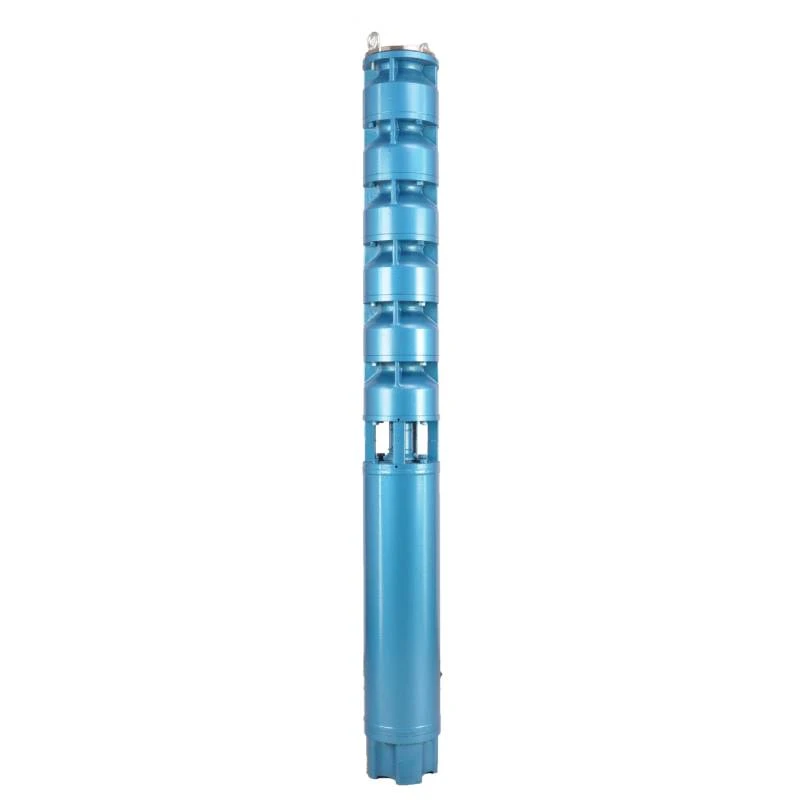Nov . 30, 2024 10:06 Back to list
Submersible Deep Well Pumps for Efficient Water Extraction Solutions
Understanding Deep Well Submersible Pumps
In the world of agricultural irrigation, municipal water supply, and even in some industrial applications, the importance of having a reliable water source cannot be overstated. One of the most efficient solutions for accessing groundwater is the deep well submersible pump. This article aims to explore the workings, benefits, and considerations associated with these essential devices.
What is a Deep Well Submersible Pump?
A deep well submersible pump is a type of electrical water pump that is installed deep below the surface of the water. It consists of a sealed motor, a pump body, and a system of impellers that work together to push water to the surface. Unlike surface pumps, which must be placed above the water level, submersible pumps operate below the water’s surface, allowing them to efficiently lift water from significant depths—sometimes exceeding several hundred feet.
How Do They Work?
The operation of a deep well submersible pump involves several key components. The motor of the pump is located at the bottom, submerged in water to keep it cool. This design allows the pump to operate much more efficiently than conventional pumps.
When the motor is activated, it spins the impellers, which create a centrifugal force that draws water in from the surrounding area through the pump intake. As the impellers continue to spin, they channel the water through a series of stages, effectively increasing its pressure. This pressurized water is then pushed up through a discharge column to the surface, where it can be piped into homes, irrigation systems, or other applications.
Benefits of Deep Well Submersible Pumps
One of the primary advantages of deep well submersible pumps is their efficiency. Since they operate below the water level, they reduce the risk of cavitation—a phenomenon that can occur in surface pumps when low pressure at the intake causes vapor bubbles to form, leading to damage and reduced efficiency.
Additionally, deep well submersible pumps are generally more compact and easier to maintain than surface pumps, as they are protected from the elements and potential debris. Their design minimizes the need for extensive surface infrastructure, leading to lower installation costs.
deep well pump submersible

Applications
Deep well submersible pumps find applications across various fields. In agriculture, they are crucial for irrigation systems, providing farmers with a reliable source of water. In residential settings, they supply clean water to homes that are situated far from municipal water lines. Moreover, in industrial settings, submersible pumps can be used for dewatering processes, managing water levels in construction projects, and more.
Key Considerations
While deep well submersible pumps are highly effective, there are some considerations to keep in mind when selecting and maintaining these systems
1. Sizing and Capacity It is essential to choose a pump that is appropriately sized for the specific well's diameter and depth, as well as the required flow rate and pressure.
2. Material Compatibility Given that water can vary widely in its chemical composition, selecting materials that can withstand the specific environmental conditions is vital. Corrosion-resistant materials are often preferred.
3. Power Supply Deep well submersible pumps typically require a three-phase power supply for optimal performance. In remote areas, this may necessitate alternative power solutions, such as solar energy systems.
4. Installation and Maintenance Professional installation is recommended to ensure that the pump operates correctly and safely. Regular maintenance checks should be conducted to avoid issues such as wear and tear or motor failure, which can be costly.
Conclusion
Deep well submersible pumps are vital in our quest for reliable water sources. Their efficient operation, adaptability to various applications, and compact design make them a preferred choice for many users. However, proper selection, installation, and maintenance are crucial to ensuring their longevity and effectiveness. As water scarcity becomes an increasing global concern, understanding and utilizing these pumps will become even more critical in meeting the demands of agriculture, industry, and daily life.
-
Submersible Water Pump: The Efficient 'Power Pioneer' of the Underwater World
NewsJul.01,2025
-
Submersible Pond Pump: The Hidden Guardian of Water Landscape Ecology
NewsJul.01,2025
-
Stainless Well Pump: A Reliable and Durable Pumping Main Force
NewsJul.01,2025
-
Stainless Steel Submersible Pump: An Efficient and Versatile Tool for Underwater Operations
NewsJul.01,2025
-
Deep Well Submersible Pump: An Efficient 'Sucker' of Groundwater Sources
NewsJul.01,2025
-
Deep Water Well Pump: An Efficient 'Sucker' of Groundwater Sources
NewsJul.01,2025
-
 Submersible Water Pump: The Efficient 'Power Pioneer' of the Underwater WorldIn the field of hydraulic equipment, the Submersible Water Pump has become the core equipment for underwater operations and water resource transportation due to its unique design and excellent performance.Detail
Submersible Water Pump: The Efficient 'Power Pioneer' of the Underwater WorldIn the field of hydraulic equipment, the Submersible Water Pump has become the core equipment for underwater operations and water resource transportation due to its unique design and excellent performance.Detail -
 Submersible Pond Pump: The Hidden Guardian of Water Landscape EcologyIn courtyard landscapes, ecological ponds, and even small-scale water conservancy projects, there is a silent yet indispensable equipment - the Submersible Pond Pump.Detail
Submersible Pond Pump: The Hidden Guardian of Water Landscape EcologyIn courtyard landscapes, ecological ponds, and even small-scale water conservancy projects, there is a silent yet indispensable equipment - the Submersible Pond Pump.Detail -
 Stainless Well Pump: A Reliable and Durable Pumping Main ForceIn the field of water resource transportation, Stainless Well Pump has become the core equipment for various pumping scenarios with its excellent performance and reliable quality.Detail
Stainless Well Pump: A Reliable and Durable Pumping Main ForceIn the field of water resource transportation, Stainless Well Pump has become the core equipment for various pumping scenarios with its excellent performance and reliable quality.Detail
